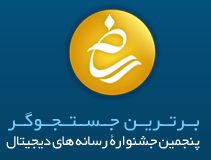عنوان
پدید آورنده
موضوع
رده
LB1585
LB1585
کتابخانه
محل استقرار
شابک
شابک
3030049523
شابک
9783030049522
شابک اشتباه
3030049515
شابک اشتباه
9783030049515
عنوان و نام پديدآور
عنوان اصلي
Creating project-based STEM environments :
نام عام مواد
[Book]
ساير اطلاعات عنواني
the REAL way /
نام نخستين پديدآور
Jennifer Wilhelm, Ronald Wilhelm and Merryn Cole.
وضعیت نشر و پخش و غیره
محل نشرو پخش و غیره
Cham, Switzerland :
نام ناشر، پخش کننده و غيره
Springer Nature,
تاریخ نشرو بخش و غیره
[2019]
تاریخ نشرو بخش و غیره
©2019
مشخصات ظاهری
نام خاص و کميت اثر
1 online resource
یادداشتهای مربوط به کتابنامه ، واژه نامه و نمایه های داخل اثر
متن يادداشت
Includes bibliographical references and index.
یادداشتهای مربوط به مندرجات
متن يادداشت
Intro; Foreword; References; Preface; Acknowledgments; Contents; Part I: Key Features of a Project-Based Classroom; Chapter 1: What Is a Project-Based STEM Environment?; Introduction to the Project-Based Instructional Setting; Project-Based Instruction Versus Textbook-Lecture-Lab in STEM Classrooms; References; Chapter 2: A Historical Perspective on Project-Based Instruction Origination, Design, and Evolution; Early Project Features; Project Work and Youth Clubs; Post Sputnik's Influence on PBI; Rebirth of PBI; PBI in Real High School STEM Classrooms; PBI in Earth Science; PBI in Mathematics
متن يادداشت
How Can I Translate the Research Literature to My Classroom?References; Part II: Example Project-Based STEM Units Designed for the Middle Level; Chapter 5: Realistic Explorations in Astronomical Learning (REAL); Literature Review; REAL Learning Expectations; Benchmark Lessons; Projects; Summary; Lesson 1: Can I See the Moon every Day and Night, and Why Does it Appear to Change its Shape?; Teacher Lesson Plan; Overview; Standards Addressed; Materials; Lesson Sequence; Student; Lesson 1: Can I See the Moon Every Day and Night, and Why Does It Appear to Change Its Shape?
متن يادداشت
Part 1: Adapted from Caldecott Connections to Science by Glandon (2000)Part 2: Creating Your Moon Journal; Lesson 2: How Do I Measure the Distance Between Objects in the Sky?; Teacher Lesson Plan; Overview; Standards Addressed; Materials; Lesson Sequence; Student; Lesson 2: How Do I Measure the Distance Between Objects in the Sky?; Lesson 2A: Exploring the Sky with Stellarium; Teacher Lesson Plan; Overview; Standards Addressed; Materials; Lesson Sequence; Student; Lesson 2A: Exploring the Sky with Stellarium; Lesson 3: How Can I Say Where I Am on the Earth?; Teacher Lesson Plan; Overview
متن يادداشت
PBI in Industrial ElectronicsSummary; Recommendations of Key Project Features; References; Chapter 3: How Can Project-Based Units Be Designed for STEM Classrooms?; What Do We Want Students to Learn?; Driving Questions; How Do We Know Students Have Learned?; Assessment; Benchmark Lessons to Facilitate Project Progress and to Ensure Common Content Opportunities to Learn; Just-in-Time Benchmark Lesson; The Role of Experts; The Role of Parents/Guardians and the Community to Legitimize Projects, Create PBI Buy-In, and Extend Learning Beyond the Classroom
متن يادداشت
The Role of Technology to Advance UnderstandingExample Technologies in PBI; Google Classroom; Simulations and Animations; Student-Generated Models; Downloadable Apps; Probeware; Summary of Technologies; Summary of PBI Criteria to Help Ensure Success and Learning; References; Chapter 4: How Can Teachers Locate and Translate Research Specific to Instructional Practice?; Why Use Research Literature?; How Do I Find Research Literature?; Search Terms; Paywalls; Practitioner Versus Research Journals; Identifying if It's a "Good" Research Article; How Should I Read Research Literature?
بدون عنوان
0
بدون عنوان
8
بدون عنوان
8
بدون عنوان
8
بدون عنوان
8
یادداشتهای مربوط به خلاصه یا چکیده
متن يادداشت
This book models project-based environments that are intentionally designed around the United States Common Core State Standards (CCSS, 2010) for Mathematics, the Next Generation Science Standards (NGSS Lead States, 2013) for Science, and the National Educational Technology Standards (ISTE, 2008). The primary purpose of this book is to reveal how middle school STEM classrooms can be purposefully designed for 21st Century learners and provide evidence regarding how situated learning experiences will result in more advanced learning. This Project-Based Instruction (PBI) resource illustrates how to design and implement interdisciplinary project-based units based on the REAL (Realistic Explorations in Astronomical Learning - Unit 1) and CREATES (Chemical Reactions Engineered to Address Thermal Energy Situations - Unit 2). The content of the book details these two PBI units with authentic student work, explanations and research behind each lesson (including misconceptions students might hold regarding STEM content), pre/post research results of unit implementation with over 40 teachers and thousands of students. In addition to these two units, there are chapters describing how to design one's own research-based PBI units incorporating teacher commentaries regarding strategies, obstacles overcome, and successes as they designed and implemented their PBI units for the first time after learning how to create PBI STEM Environments the "REAL" way.
یادداشتهای مربوط به سفارشات
منبع سفارش / آدرس اشتراک
Springer Nature
شماره انبار
com.springer.onix.9783030049522
ویراست دیگر از اثر در قالب دیگر رسانه
عنوان
Creating project-based STEM environments.
شماره استاندارد بين المللي کتاب و موسيقي
9783030049515
موضوع (اسم عام یاعبارت اسمی عام)
موضوع مستند نشده
Educational technology.
موضوع مستند نشده
Engineering-- Study and teaching.
موضوع مستند نشده
Mathematics-- Study and teaching.
موضوع مستند نشده
Science-- Study and teaching.
موضوع مستند نشده
Technology-- Study and teaching.
موضوع مستند نشده
EDUCATION-- Elementary.
موضوع مستند نشده
Educational technology.
موضوع مستند نشده
Engineering-- Study and teaching.
موضوع مستند نشده
Mathematics-- Study and teaching.
موضوع مستند نشده
Science-- Study and teaching.
موضوع مستند نشده
Technology-- Study and teaching.
مقوله موضوعی
موضوع مستند نشده
EDU-- 010000
رده بندی ديویی
شماره
372
.
35
ويراست
23
رده بندی کنگره
شماره رده
LB1585
نام شخص به منزله سر شناسه - (مسئولیت معنوی درجه اول )
مستند نام اشخاص تاييد نشده
Wilhelm, Jennifer
نام شخص - (مسئولیت معنوی برابر )
مستند نام اشخاص تاييد نشده
Cole, Merryn
مستند نام اشخاص تاييد نشده
Wilhelm, Ronald
مبدا اصلی
تاريخ عمليات
20200823081101.0
قواعد فهرست نويسي ( بخش توصيفي )
pn
دسترسی و محل الکترونیکی
نام الکترونيکي
 مطالعه متن کتاب
مطالعه متن کتاب اطلاعات رکورد کتابشناسی
نوع ماده
[Book]
اطلاعات دسترسی رکورد
تكميل شده
Y

